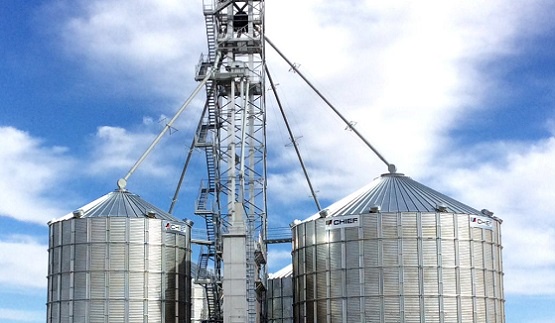Working in and around grain bins is an essential aspect of modern agriculture, but it can also be hazardous. Grain bins, while crucial for storing and preserving crops, present various risks to farmers and workers. To mitigate these dangers, specialized grain bin safety gear has been developed to ensure the protection and well-being of those working in these potentially perilous environments.
Understanding the Hazards of Grain Bins
Grain bins store vast quantities of grains and oilseeds, creating an environment where several potential dangers can arise:
Engulfment: Grains can behave like quicksand when a person becomes trapped inside a bin. Engulfment can happen swiftly, making it challenging for victims to escape on their own.
Suffocation: The weight and pressure of stored grains can restrict airflow, leading to suffocation when a worker is trapped inside a grain bin.
Falling: Working at heights within grain bins can lead to falls, which may result in serious injuries or fatalities.
Entanglement: Moving parts within grain bin machinery, such as augers and conveyors, pose risks of entanglement, which can result in severe injuries.
Given these potential hazards, the use of proper safety gear is essential to protect the lives and well-being of farmers and workers.
Essential Grain Bin Safety Gear
Grain Bin Entry Kits: These kits are designed to provide the necessary equipment for safe entry into grain bins. They typically include harnesses, lifelines, anchors, and other fall protection gear to prevent falls and assist in rescue operations.
Respiratory Protection: Dust and mold particles present in grain bins can pose respiratory risks. Dust masks or respirators help protect workers from inhaling harmful contaminants.
Grain Bin Rescue Tubes: In the event of engulfment, rescue tubes can be used to create a protective barrier around the victim, preventing further grain from flowing in and allowing for safe extraction.
Lockout/Tagout Devices: These devices ensure that machinery within grain bins is powered off and locked out before workers enter, reducing the risk of entanglement or other accidents.
Grain Bin Safety Signs and Labels: Clear signage and labeling can communicate safety procedures, hazard warnings, and emergency contact information to workers.
Safety Training: Adequate training on grain bin safety procedures is a crucial component of worker protection. Training programs should cover topics like grain bin entry, engulfment prevention, and emergency response.
Engulfment Prevention
Preventing engulfment is a primary goal of grain bin safety gear and procedures. To minimize the risk of engulfment, several steps should be followed:
Lockout/Tagout: Before entering a grain bin, all equipment inside should be turned off and locked out to prevent accidental activation.
Proper Ventilation: Adequate ventilation should be provided to maintain oxygen levels inside the bin and reduce the risk of suffocation.
Never Work Alone: Workers should never enter a grain bin alone. Having a partner outside the bin can assist in case of an emergency.
Safety Harnesses and Lifelines: Workers entering grain bins should be equipped with safety harnesses and lifelines to prevent falls and facilitate rescue efforts.
Rescue Training: All personnel should be trained in grain bin rescue procedures, including the use of rescue tubes and other equipment.
Emergency Response
In the event of an emergency inside a grain bin, a well-defined emergency response plan is crucial. This plan should include:
Immediate Action: If a worker becomes engulfed, bystanders should immediately call for help and follow established rescue procedures.
Rescue Equipment: Emergency response teams should have access to grain bin rescue equipment and be trained in its use.
Medical Assistance: Victims of grain bin accidents may require medical attention, so emergency medical services should be contacted promptly.
Documenting Incidents: After any grain bin incident, it is essential to thoroughly document the event for safety investigations and future prevention measures.
Conclusion
Grain bins are essential for storing and preserving crops, but they also pose inherent risks to farmers and workers. Engulfment, suffocation, falls, and entanglement are all potential hazards within grain bins. Proper grain bin safety gear, training, and emergency response procedures are vital for protecting the lives and well-being of those working in these hazardous environments. By prioritizing safety and using the right equipment, farmers and workers can reduce the risks associated with grain bin operations and ensure a safer working environment in agriculture.


No comments yet